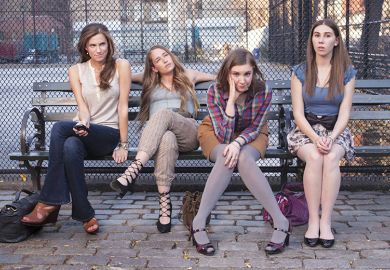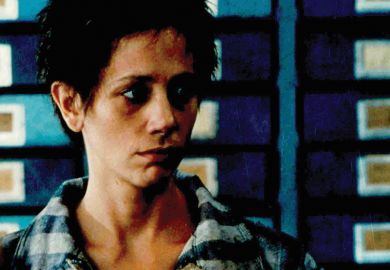This book presents an intriguing premise: that the stars of some of the key horror films of the past 60 years are, in fact, household objects such as the humble sofa, bed, refrigerator, radiator, dining table and microwave. Taking 14 ordinary items, Marc Olivier explores their “dark side” to show how they “manifest their own power and connect with specific cultural fears and concerns”.
The book is divided into four sections, each exploring a key domestic space, namely the kitchen/dining room, living room and bedroom before culminating in the bathroom. Within each section, relevant household objects are discussed, leading to such subtitles as “The Cold Womb” and “The Abject Refrigerator”. In Olivier’s reading, William Friedkin’s The Exorcist (1973) is as much about the bed as it is about child possession. He explores Alfred Hitchcock’s Psycho (1960) from the perspective of the shower curtain before segueing into the horrors of polyvinyl chloride (PVC). This leads one to wonder how many times shower curtains, or similar, have been used in the movies to dispose of bodies.
In addition to the shower curtain in Psycho, the section on the bathroom focuses on the radiator (David Lynch’s Eraserhead, 1977) and pills (Mervyn LeRoy’s The Bad Seed (1954), Roman Polanski’s Rosemary’s Baby (1968) and Scott Derrickson’s The Exorcism of Emily Rose (2005)). I would argue, though, that perhaps the whole space of the cinematic bathroom – especially mirrors and toilets – plays a bigger role not only in Psycho but in the horror genre in general, with examples including Stanley Kubrick’s The Shining (1980) and David S. Goyer’s The Unborn (2009).
In his chapter on the microwave, Olivier discusses Joe Dante’s Gremlins (1984), which even connects to the use of Zyklon B during the Holocaust. His analysis of Andrzej Żuławski’s Possession (1981) leads him to conclude that “if ever an appliance were a golem, it would be a refrigerator”. This last point opens up all kinds of intriguing questions that, disappointingly, are not answered.
Predictably, Olivier’s discussion of The Shining focuses on the typewriter, a source of much academic and online fan debate. He introduces some intriguing French sources into his analysis, as well as a discussion of fonts that Kubrick would have enjoyed, but perhaps misses a trick when he doesn’t make explicit the link between Jack’s typing and the attempted “correction” of his family (as in correction fluids such as Tipp-Ex and Wite-Out). Also, the idea of mechanical typing as gunfire connects to the opening of Alan J. Pakula’s All the President’s Men (1976), where ordinary objects such as typewriters take on greater power and significance in helping to cause the downfall of a president.
I enjoyed the essays in this book, but it’s a shame it is not more snappily written, which would have enhanced its readability for a wider audience. For example, Olivier explains how he is inspired by “object-oriented philosophy and the nonhuman turn in philosophy”. But is this rationale really necessary when any research that sheds fresh light on much-studied classics, particularly when it doesn’t rely on well-trodden psychoanalytic paths, is welcome?
I now look forward to more object-based analysis that highlights the unusual and less obvious elements of popular films.
Nathan Abrams is professor in film at Bangor University.
Household Horror: Cinematic Fear and the Secret Life of Everyday Objects
By Marc Olivier
Indiana University Press, 344pp, £79.00
ISBN 9780253046550
Published 1 March 2020
Register to continue
Why register?
- Registration is free and only takes a moment
- Once registered, you can read 3 articles a month
- Sign up for our newsletter
Subscribe
Or subscribe for unlimited access to:
- Unlimited access to news, views, insights & reviews
- Digital editions
- Digital access to THE’s university and college rankings analysis
Already registered or a current subscriber?







